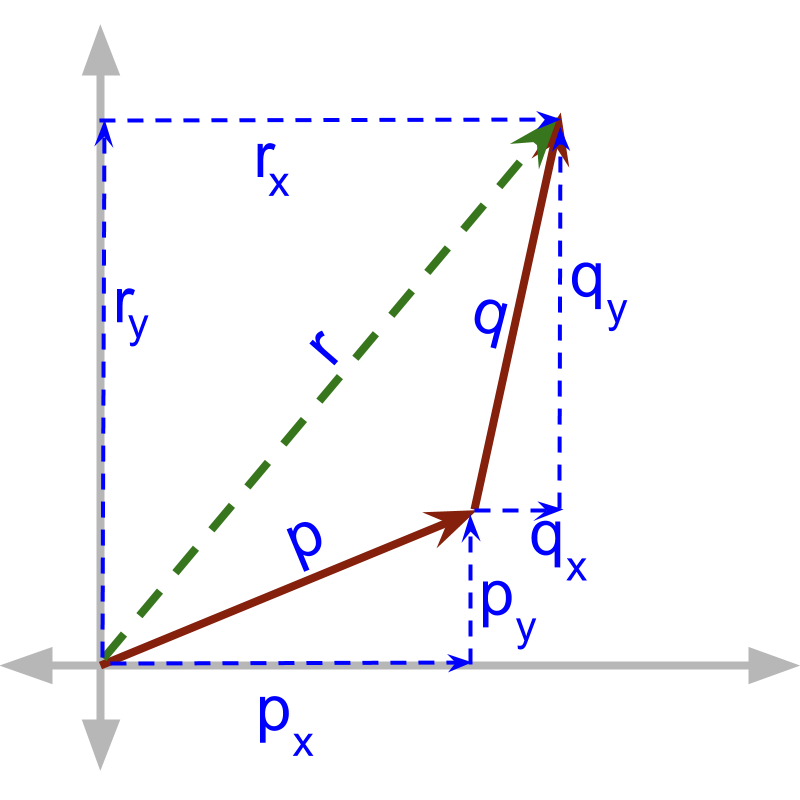
what you'll learn...
Overview
Vector Addition : Component form
» individual components add
 →
→
→
→
component form
The component form of a vector is representation of vector with the 'components along and axes'.
Two vectors and are added. The result of addition of the two vectors is
The magnitudes add up as two vectors are in the same direction , that is, along x-axis.
The result of addition of two vectors and is ''. The magnitudes add up along the directions in parallel and the directions in perpendicular are kept separately. In this problem, in the direction of x-axis, and are given. They are added in magnitude.
That is expanded further. The result of addition of two vectors and is ''. The magnitudes add up along the directions in parallel and the directions in perpendicular are kept separately. In these two vectors, the components along the three axes are given in component form.
summary
Addition of two vectors: When two vectors and are added the result is
When vectors in the component form are added, the corresponding components are added.
Outline
The outline of material to learn vector-algebra is as follows.
Note: Click here for detailed outline of vector-algebra.
• Introduction to Vectors
→ Introducing Vectors
→ Representation of Vectors
• Basic Properties of Vectors
→ Magnitude of Vectors
→ Types of Vectors
→ Properties of Magnitude
• Vectors & Coordinate Geometry
→ Vectors & Coordinate Geometry
→ Position Vector of a point
→ Directional Cosine
• Role of Direction in Vector Arithmetics
→ Vector Arithmetics
→ Understanding Direction of Vectors
• Vector Addition
→ Vector Additin : First Principles
→ Vector Addition : Component Form
→ Triangular Law
→ Parallelogram Law
• Multiplication of Vector by Scalar
→ Scalar Multiplication
→ Standard Unit Vectors
→ Vector as Sum of Vectors
→ Vector Component Form
• Vector Dot Product
→ Introduction to Vector Multiplication
→ Cause-Effect-Relation
→ Dot Product : First Principles
→ Dot Product : Projection Form
→ Dot Product : Component Form
→ Dot Product With Direction
• Vector Cross Product
→ Vector Multiplication : Cross Product
→ Cross Product : First Principles
→ Cross Product : Area of Parallelogram
→ Cross Product : Component Form
→ Cross Product : Direction Removed